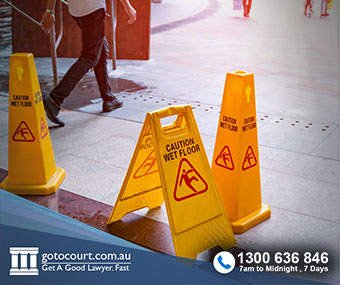Call our lawyers
now
or,
have our lawyers
call you
Negligence in Tasmania (Tas)
Updated on Nov 03, 2022 • 6 min read • 256 views • Copy Link
Negligence in Tasmania (Tas)
Negligence is a failure to behave with the due care that someone of ordinary prudence would apply in the same circumstances. When this failure results in someone else’s loss, a civil negligence claim can be made to recover compensation for this injury or damage. In Tasmania, the Civil Liability Act 2002 creates a framework for negligence claims. This article outlines the civil tort of negligence in Tasmania.
What is negligence?
When a person experiences a loss or injury due to another’s negligence, they can seek compensation to return them to the position they would have occupied, if not for the other person’s wrongful act (or failure to act). Negligence claims often take the form of personal injury claims, resulting from everything from medical negligence to injuries sustained in car accidents. In addition, a negligence claim can be for compensation for property damage or recompense for lost income and other economic losses.
A plaintiff must prove all four of the following elements to make a successful claim of negligence:
- The other person had a duty of care towards them.
- There was a breach of this duty of care.
- The plaintiff suffered recognisable injury or damage.
- The other person’s breach of duty of care was a cause of the injury or damage.
Duty of care
Certain institutions and professionals have a legal duty of care to avoid causing foreseeable harm to specific individuals. For example, a school has a duty of care towards its students, but not to the community at large. Likewise, a physician owes a duty of care to his or her patients, but not everyone on the street. These are just two examples of existing categories of duty of care relationships, but the courts have recognised many more. Established duty of care relationships are characterised by the fact that one of the parties relies on the other party to take care. For instance, a prisoner must rely on the prison to take reasonable care of their well-being, because they are not able to take care of themselves.
Even when the plaintiff was not in a recognised duty of care relationship with the defendant, a court can find that there was a duty of care. In these cases, the court usually draws an analogy between an established duty of care relationship and the case at hand. Importantly, the plaintiff must establish that there was “proximity” (a sufficiently close relationship between the plaintiff and defendant) and that there was the necessary degree of control and reliance.
In Tasmania, the Civil Liability Act 2002 does make some exceptions to the general rules about duty of care and negligence. For instance, someone who gives emergency aid is exempt from a duty of care. As a general rule, a Good Samaritan who provides assistance in good faith and does not act recklessly is not legally liable.
Breach of duty
Once the plaintiff establishes that the defendant had a duty of care, they must then prove that the defendant breached their responsibility. A breach occurs when someone acts with less care than a reasonable person would have exercised, given the risks of the situation. In Tasmania, a person only breaches their duty of care when:
- the risk was reasonably foreseeable;
- the level of risk was not insignificant; and
- in the circumstances, a reasonable person would have taken precautions against the risk.
Someone can also be held vicariously liable for the negligent acts of another person. For instance, an employer typically has vicarious liability for the negligence of employees. So, a school is usually liable if a staff member’s negligence causes injury or damage to a student.
There has historically been some confusion over whether an apology constitutes an admission of guilt in a negligence case. People make an apology in everyday life to express sympathy or regret, without meaning to admit to liability. Under Tasmanian law, an apology made by or on behalf of a person does not represent an implied or express admission of fault. In fact, evidence of an apology is not admissible in a civil negligence proceeding.
Injury, damage or loss
Another essential element of a negligence claim is the plaintiff’s injury, damage or loss. In many cases, the plaintiff’s injury is obvious. For instance, when an employee sustains a chemical burn on their arm at work, there is no question that they have been injured. However, some invisible injuries and losses are more difficult to establish. For instance, it can be much harder to establish psychological damage caused by workplace bullying. Some economic losses can also be difficult to establish.
Breach of duty of care causing injury
After establishing that the defendant had a duty of care and breached that duty, and that the plaintiff sustained injury or damage, the plaintiff must then draw a causal link between the breach and the damage. For example, the plaintiff with a burnt arm may be able to easily demonstrate that the burn was the result of their employer’s failure to service equipment at work. It is more difficult, however, to prove that a psychological injury was caused by a hostile work environment. It can also be more difficult to establish causation when there is a pre-existing injury, if the plaintiff is claiming that their injury was aggravated by the negligence.
Sometimes a plaintiff is also partially responsible for their own injury, because they do not take reasonable care of their own health or safety. When there is proof of contributory negligence, this can reduce the defendant’s liability, even if they were in breach of their duty of care. For example, if a passenger is injured in a car accident, it may be contributory negligence if they were not wearing their seatbelt at the time. As a rule, contributory negligence does not rule out a successful negligence claim, but it may limit the amount of compensation. Notably, there is an automatic presumption of contributory negligence in Tasmania when the person was intoxicated when they were injured. This is because they were incapable of exercising due care themselves as a result of their condition. However, this provision does not apply if the intoxication was not self-induced.
Time limits for negligence claims
In Tasmania, the time limits for negligence claims are contained in the Limitation Act 1974. For most personal injuries that occur after 2005, the time limit is either 12 years from the date of injury, or three years from the date of discoverability (when the person became aware of the injury). Regardless of these limitation periods, it is always best not to delay seeking legal advice, as some litigation must be filed in a shorter period. For instance, there are shorter limitation periods for Workers’ Compensation claims, and compensation claims under the Motor Accidents Insurance Board.
Go To Court Lawyers can answer any questions you have about negligence claims in Tasmania. Whether you need to know about deadlines to file a claim, the legal basis for negligence claims, or your chances of success, please contact our offices on 1300 636 846.

Affordable Lawyers
Our Go To Court Lawyers will assist you in all areas of law. We specialise in providing legal advice urgently – at the time when you need it most. If you need a lawyer right now, today, we can help you – no matter where you are in Australia.How It Works







1. You speak directly to a lawyer
When you call the Go To Court Legal Hotline, you will be connected directly to a lawyer, every time.


2. Get your legal situation assessed
We determine the best way forward in your legal matter, free of charge. If you want to go ahead and book a face-to-face appointment, we will connect you with a specialist in your local area.


3. We arrange everything as needed
If you want to go ahead and book a fact-to-face appointment, we will connect you with a specialist in your local area no matter where you are and even at very short notice.





















